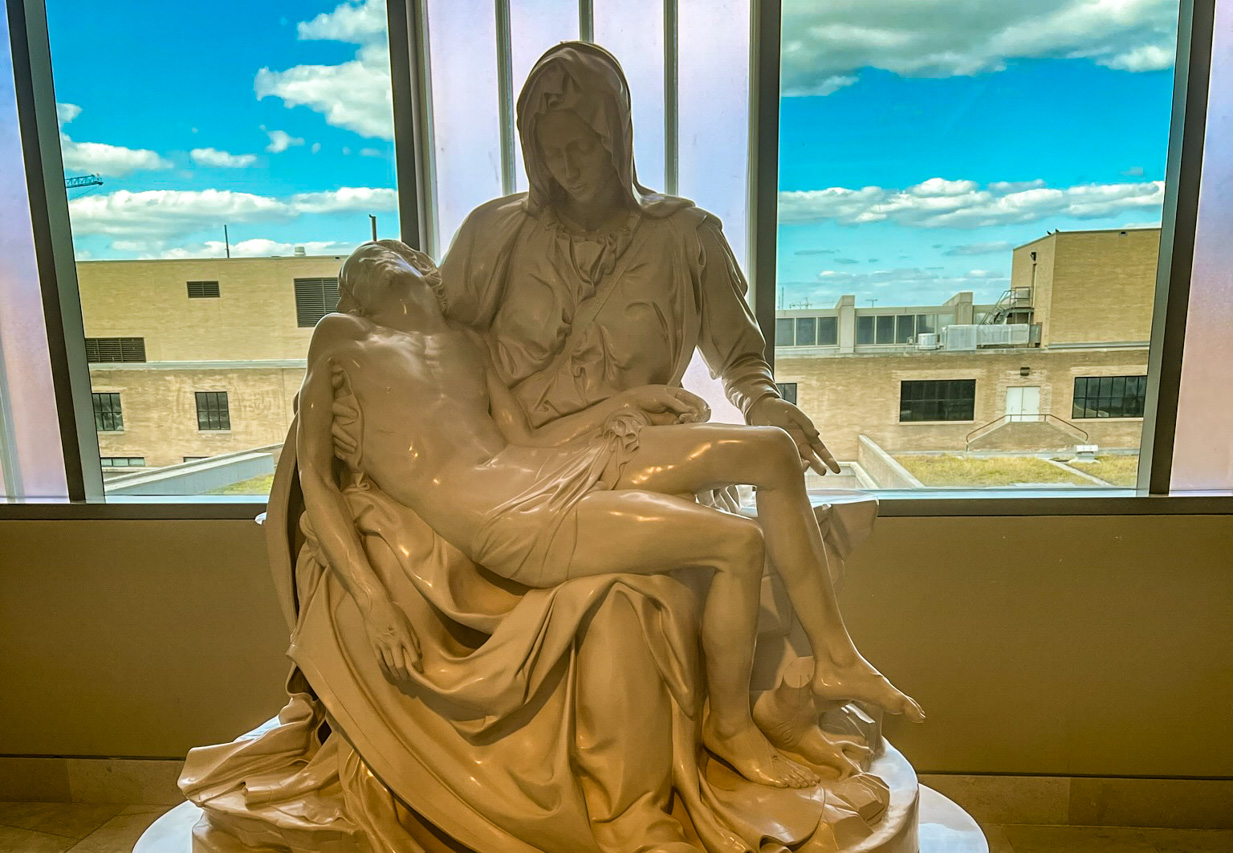

 ©Michael Player
©Michael Player
Chapter 19:31-37 (ESV) - Since it was the day of Preparation, and so that the bodies would not remain on the cross on the Sabbath (for that Sabbath was a high day), the Jews asked Pilate that their legs might be broken and that they might be taken away. So the soldiers came and broke the legs of the first, and of the other who had been crucified with him. But when they came to Jesus and saw that he was already dead, they did not break his legs. But one of the soldiers pierced his side with a spear, and at once there came out blood and water. He who saw it has borne witness—his testimony is true, and he knows that he is telling the truth—that you also may believe. For these things took place that the Scripture might be fulfilled: “Not one of his bones will be broken.” And again another Scripture says, “They will look on him whom they have pierced.”
Question to consider: Why do you think John describes the water and blood pouring out from the side of Jesus?
I find it astounding that the religious leaders could call for the crucifixion of Christ that morning and be concerned about breaking the Sabbath that evening. It reminds me of the parable Jesus told about those who had been made stewards of a vineyard who believed they would receive it as an inheritance if they killed the son of the landowner.
I believe the events that surrounded Jesus’s death were disconcerting to the soldiers near Jesus. Matthew pointed out the following, “When the centurion and those who were with him, keeping watch over Jesus, saw the earthquake and what took place, they were filled with awe and said, ‘Truly this was the Son of God!’” (Matthew 27:54) So it is not a surprise that they approached Jesus last and used the spear to verify His death rather than breaking His legs. In doing so, John pointed to two prophetic passages.
The first is Psalm 34. The specific verses would be, “Many are the afflictions of the righteous, but the Lord delivers him out of them all. He keeps all his bones; not one of them is broken.” (Psalm 34:19-20) Earlier in the Psalm David proclaimed, “Taste and see that the Lord is good!” The imagery here is reminiscent of the Passover lamb. Such a lamb was roasted with its head, organs, and bones all intact (Exodus 12:46). The people were to eat to their fill and then burn the rest before sunrise. This image of Christ with bones unbroken points to the proclamation of John the Baptist that Jesus was “the [paschal] Lamb of God who takes away the sin of the world!”
The second is from Zechariah 12:10, “And I will pour out on the house of David and the inhabitants of Jerusalem a spirit of grace and pleas for mercy, so that, when they look on me, on him whom they have pierced, they shall mourn for him, as one mourns for an only child, and weep bitterly over him, as one weeps over a firstborn.” I would recommend that you read through my study of this passage in Zechariah. That prophecy ends with the following, “On that day there shall be a fountain opened for the house of David and the inhabitants of Jerusalem, to cleanse them from sin and uncleanness.” (Zechariah 13:1). The fountain that was opened was the blood and water pouring out from the side of Christ. This also pointed to the vision given to Ezekiel of the temple in the heavenly Jerusalem which depicted a small stream flowing from the altar that went out of the temple, growing deeper and wider until it was an impassable river and ultimately a freshwater sea that gave life to all creatures (Ezekiel 47:1-12).
There are those who think John’s testimony about the piercing of the side of Jesus was simply to verify His death. It’s possible. John’s gospel was to give testimony to those who denied Christ coming in the flesh, and this would dispel any notion of this. However, I would also argue that John consolidated the points of this gospel in his first epistle so that his epistle can be studied alongside the gospel account. In 1 John 5:6, he wrote, “This is he who came by water and blood—Jesus Christ; not by the water only but by the water and the blood. And the Spirit is the one who testifies, because the Spirit is the truth.” I would argue that the water and the blood point us to the baptism of Christ when the Spirit descended and remained on Him all the way up until the point in which Jesus gave up His Spirit and went to the Father after pouring out His blood for the forgiveness of sins. John saw this as a summary of the entire work of Christ of which he bore witness. In the same way, we enter into the covenant of faith in baptism and are sustained through the body and blood of Christ in communion.
Dear heavenly Father, thank You for the witness of John which demonstrated the fulfillment of the Law and Prophets. May we rest in the knowledge that Christ has poured out on us His saving grace and has given us the peace which comes from being in a right relationship with You. Amen.